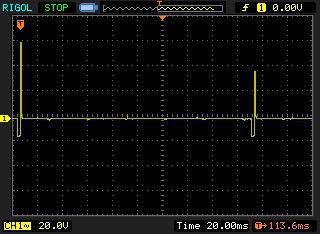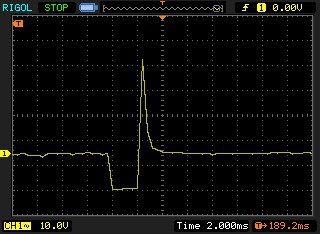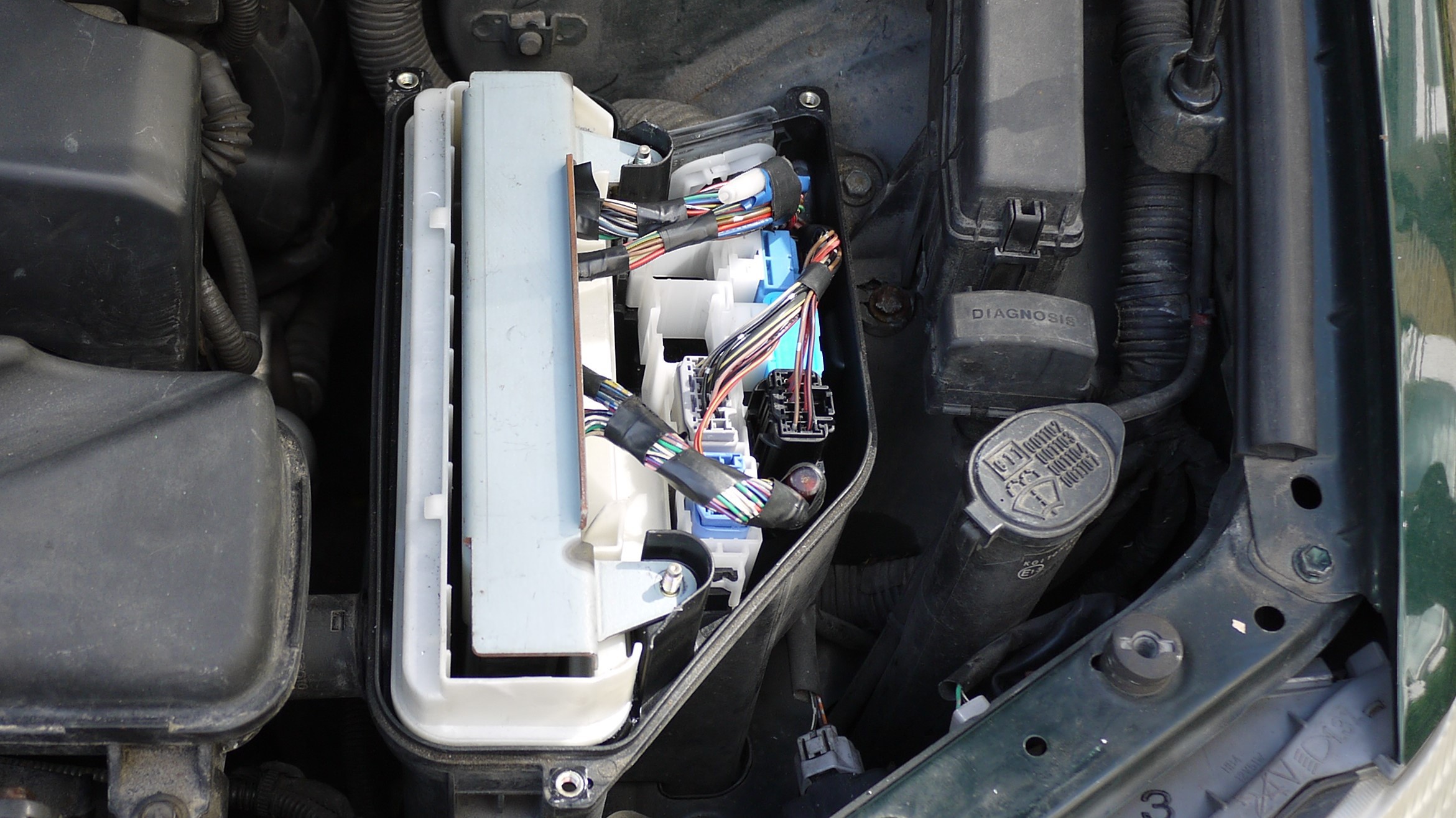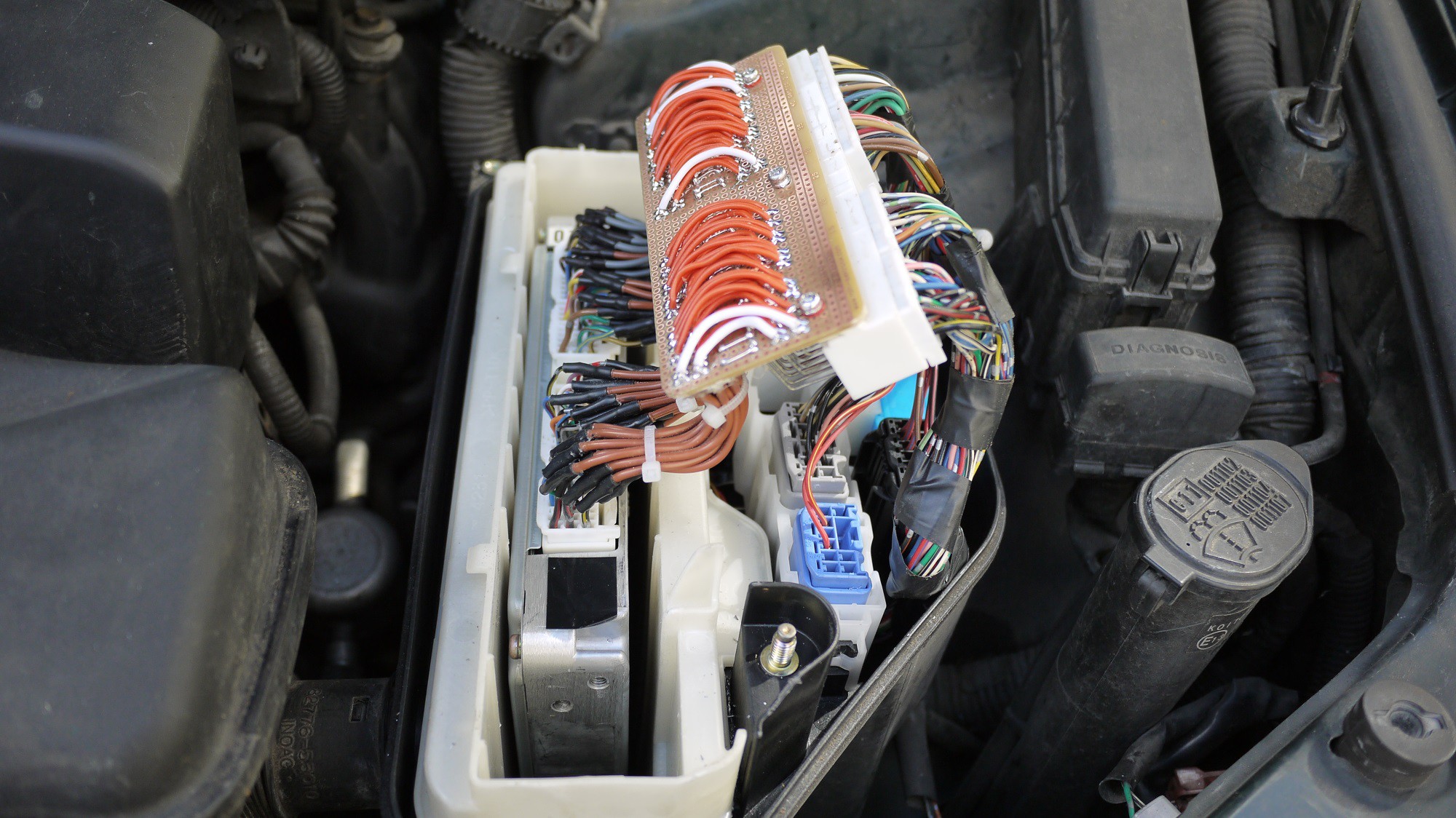I really needed to investigate how the ECU controlled the injectors before I went much further on the design of the piggy back ECU. I was worried that the ECU might PWM the injectors during each injection stroke rather than fire a single shot.
Due to the way that the ECU is installed in the car, it was not possible to probe any of the ECU pins without cutting the loom. Note the ECU mounting bracket that covers the connectors.
I should note that you cannot even unplug the ECU without removing this mounting bracket. To do this you must remove 4 tamper proof bolts. These look like a tamper proof tox head but the central pin is a bit larger. very annoying. A bit of research shows that they may be a tamper proof 'torx plus' head. I just drilled them out and replaced them with some normal M5 bolts...
I was able to unsolder the connector from my spare ECU (not easy using a soldering iron and a cheap solder pump, took about 3 hours) and make an adapter board. This will allow me to probe signals while the engine is running. It will also give me a neat way to tap off and interrupt signals to my piggy back ECU. Here it is installed below. This just fits under the electronics box cover.
The ECU mounting bracket hides the joints and makes it look much neater!
Although I had fully tested the adapter board I was still a bit nervous turning the key. Luckily the engine started fine and there was no magic smoke released.
With the engine running I was able to identify a few signals of interest. Most importantly the drive to the fuel injectors. Here is injector 1 at idle (about 700 RPM):
 |  |
The ECU grounds the injector as I had expected. Also it seems to only fire a single pulse on each cycle. I need to put the engine under full load to check this however. I'll get my girlfriend to take me and the oscilloscope for a drive over the next few days.
It will be interesting to see what the injector duty is at full load in NA form. This will indicate how much head room I have to extend the injector duration before 100% duty cycle is reached. I may have to increase the fuel pressure to get correct fuelling at full power with the turbo.
 Rory
Rory


Discussions
Become a Hackaday.io Member
Create an account to leave a comment. Already have an account? Log In.